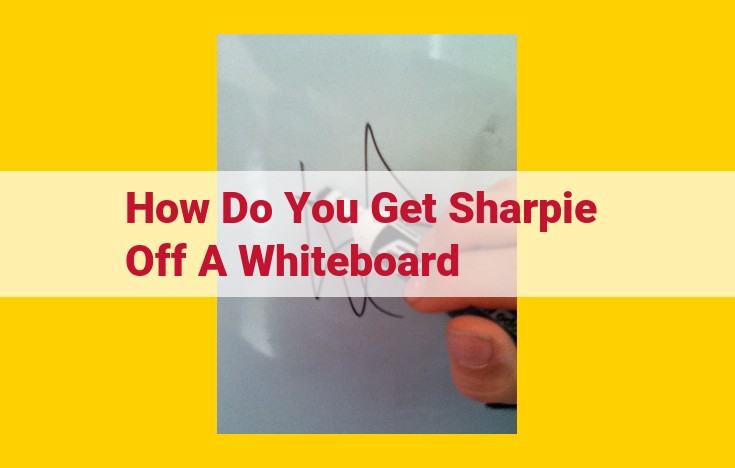To remove Sharpie from a whiteboard, consider the type of surface and ink (permanent or non-permanent) and the age of the stain. Common materials for removal include dry erase markers for recoloring, whiteboard erasers for scrubbing, rubbing alcohol for dissolving ink, and nail polish remover for tough stains. Safety precautions are crucial, including wearing gloves and ensuring proper ventilation when using chemicals.
Unveiling the Secrets: How to Remove Sharpie Stains from Your Whiteboard Flawlessly
As an educator, you’re perpetually engaged in a battle against whiteboard stains, particularly those pesky Sharpie marks. Don’t fret, for we have meticulously compiled an arsenal of materials to help you conquer this whiteboard scourge:
-
Dry Erase Markers: These unsung heroes are not merely for writing; their recoloring capabilities extend to Sharpie stains. Simply trace over the offending mark with a fresh dry erase marker and wipe it away with an eraser. Presto! The stain vanishes.
-
Whiteboard Erasers: These trusty tools are your first line of defense against Sharpie invasions. Scrub the stain diligently with a whiteboard eraser, applying gentle pressure. While it may not completely obliterate the mark, it will significantly diminish its presence.
-
Rubbing Alcohol: For those stubborn stains that refuse to budge, summon the power of rubbing alcohol. Apply a small amount to a cotton ball and gently dab at the stain. Its dissolving properties will effectively break down the ink, restoring your whiteboard to its pristine glory.
Factors to Consider for Effective Sharpie Stain Removal on Whiteboards
When it comes to erasing Sharpie stains from whiteboards, it’s not a one-size-fits-all solution. Several factors play a crucial role in determining the most suitable removal method. Here’s what you need to keep in mind:
Type of Whiteboard Surface:
Not all whiteboards are created equal. Some are made from porcelain, others from melamine, and some from dry-erase laminate. The type of surface affects the ease and effectiveness of stain removal. For instance, porcelain whiteboards are more durable and resistant to harsh chemicals, while dry-erase laminate surfaces can be more delicate.
Type of Sharpie Ink:
Sharpie markers come in two main types: permanent and non-permanent. Permanent Sharpie ink is more resistant to erasure, while non-permanent Sharpie ink can be removed more easily with the right techniques. Knowing the type of ink used will guide you towards the appropriate removal method.
Age of the Stain:
Fresh Sharpie stains are generally easier to remove than older ones. As the ink sets over time, it becomes more difficult to erase, especially if the surface has been subjected to heat or sunlight. However, with the right approach and a bit of patience, even older stains can be removed.
Safety First: Shield Yourself Before Erasing Sharpie Stains
When tackling stubborn Sharpie stains on whiteboards, safety should be your top priority. Certain chemicals used for stain removal, such as nail polish remover and rubbing alcohol, can pose health risks if handled carelessly.
To protect yourself, don gloves to avoid skin irritation and ensure proper ventilation by opening windows or using a fan. Inhaling the fumes from these chemicals can cause breathing difficulties and headaches.
Remember, these safety precautions are in place to safeguard your well-being. By following them, you can safely and effectively remove those pesky Sharpie marks without compromising your health.
